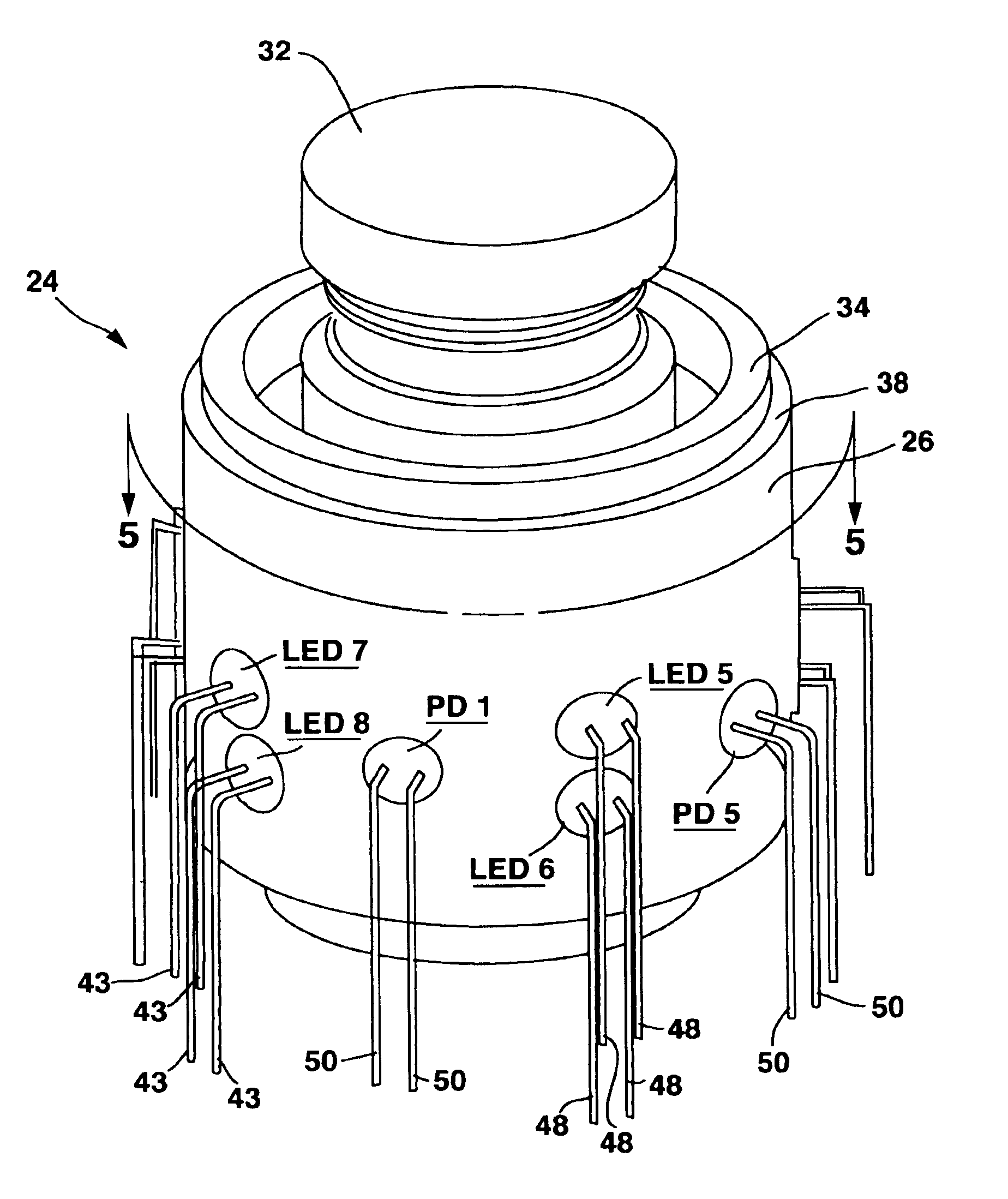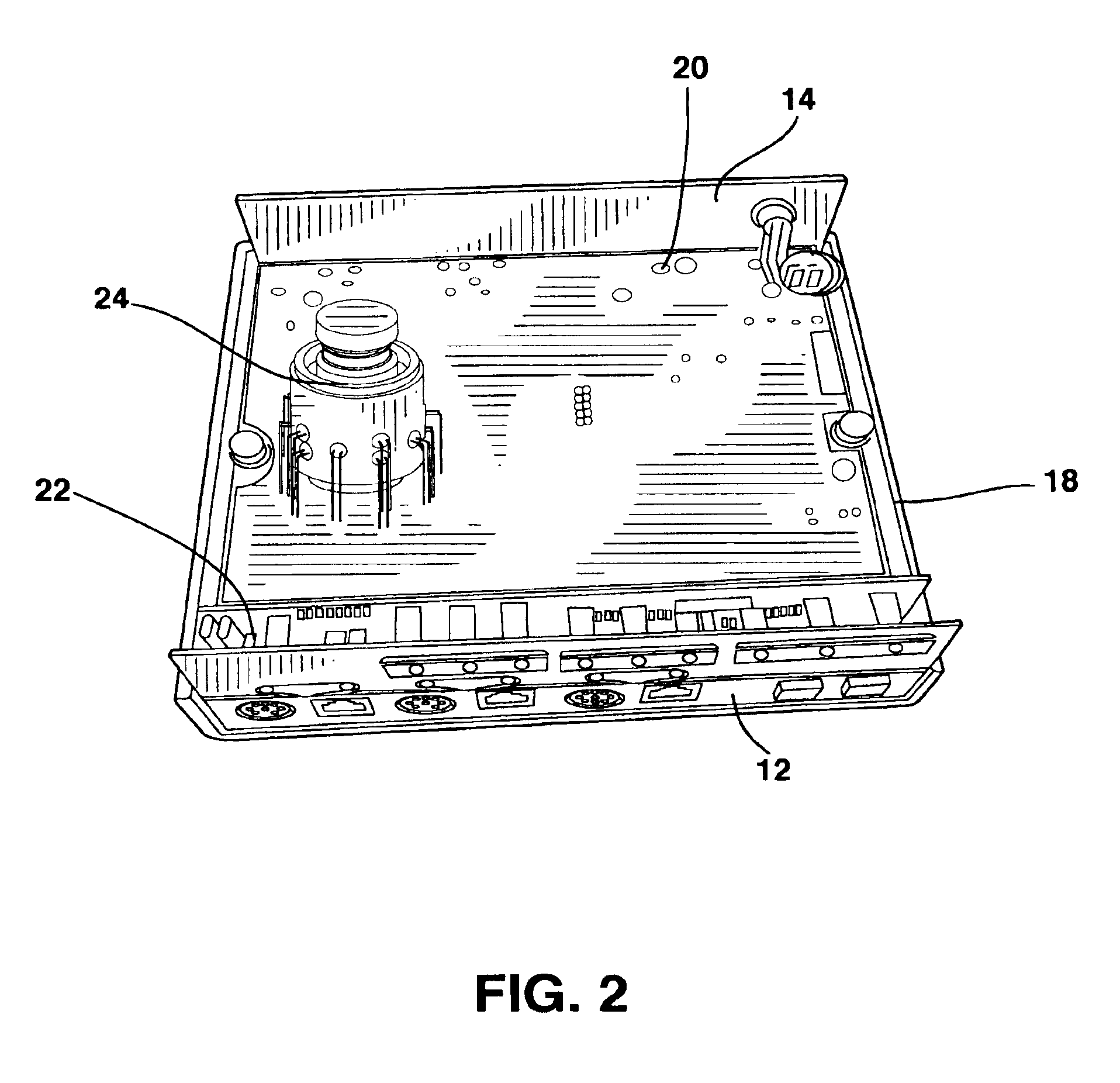Instrument with colorimeter and sensor inputs for interfacing with a computer
- Summary
- Abstract
- Description
- Claims
- Application Information
AI Technical Summary
Benefits of technology
Problems solved by technology
Method used
Image
Examples
Embodiment Construction
[0018]A diode array colorimeter instrument 10 according to the present invention is shown in FIGS. 1-7. Instrument 10 includes a front panel 12, a rear panel 14, a top cover 16 extending partially down the sides of instrument 10 as shown in FIG. 1, and a bottom cover 18 extending partially up the sides to meet and abut the top cover 16 as shown in FIGS. 2 and 3. A main circuit board 20 is installed within the instrument 10, as shown in FIGS. 2 and 3, and a circuit board 22 for controlling the front panel display is installed within instrument 10, as shown in FIGS. 2 and 3.
[0019]A diode array test sample holder 24 is mounted to circuit board 20 as shown in FIGS. 2 and 3. Test sample holder 24 in includes a tubular body 26, as shown in FIG. 4, extending around a longitudinal axis 28, as shown in FIG. 6, with a hollow interior 30. The hollow interior 30 is sized to accept a transparent cylindrical vial 32, as shown in FIG. 4.
[0020]The body 26 of sample holder 24 includes an upper annul...
PUM
 Login to View More
Login to View More Abstract
Description
Claims
Application Information
 Login to View More
Login to View More - R&D
- Intellectual Property
- Life Sciences
- Materials
- Tech Scout
- Unparalleled Data Quality
- Higher Quality Content
- 60% Fewer Hallucinations
Browse by: Latest US Patents, China's latest patents, Technical Efficacy Thesaurus, Application Domain, Technology Topic, Popular Technical Reports.
© 2025 PatSnap. All rights reserved.Legal|Privacy policy|Modern Slavery Act Transparency Statement|Sitemap|About US| Contact US: help@patsnap.com



